How to Find Sponsors for YouTube?
Understanding Sponsorship
In the context of YouTube, a sponsorship involves a business relationship where a brand financially supports a creator’s content in exchange for promotion of its products or services. This arrangement is typically targeted, aligning the brand with content that resonates with its desired demographic, thereby enhancing the brand’s visibility and appeal to a specific audience.
Differentiating Sponsorships from Other Forms of Monetization:
Sponsorships vs. Affiliate Marketing: While sponsorships involve a direct financial agreement between a creator and a brand for specific content promotion, affiliate marketing is performance-based. In affiliate marketing, creators earn a commission when their audience takes an action, such as purchasing a product using a specific link. There’s often less upfront money involved compared to sponsorships, with earnings directly tied to audience actions.
Sponsorships vs. Direct Advertising: Direct advertising on YouTube typically refers to ads placed by YouTube itself through its AdSense program, where creators earn money based on views and clicks. These ads are not controlled by the creators and can vary widely in relevance to the content. In contrast, sponsorships are curated partnerships where the creator has control over how and what of the brand’s message is conveyed, ensuring it fits seamlessly with their content and audience expectations.
Understanding these distinctions helps creators align their monetization strategies with their channel’s goals and audience, ensuring authentic and effective brand partnerships.
Preparing Your Channel for Sponsorship
Securing a sponsorship begins long before you reach out to potential sponsors; it starts with how you present your channel and brand. A clear, professional brand identity not only attracts viewers but also makes your channel appealing to potential sponsors.
Establishing a Professional Brand Identity:
A strong brand identity clarifies who you are, what you stand for, and whom you serve. It encompasses everything from the visual elements like your channel logo and design to the tone and consistency of your content. This cohesive branding reassures sponsors that you are a serious creator capable of engaging a loyal audience effectively.
Creating a Media Kit:
A media kit is essential for communicating the value of your channel to potential sponsors efficiently. It acts as a resume, providing a snapshot of your channel’s performance and audience in a polished, professional format.
Key Elements to Include in Your Media Kit:
Channel Overview: A brief description of what your channel is about, including your content themes and unique selling points.
Audience Demographics: Detailed information about your viewers, such as age range, gender distribution, geographical location, and interests. This data helps sponsors determine if your audience aligns with their target market.
Engagement Rates: Highlight metrics such as average views per video, comments, likes, and the engagement rate. These statistics demonstrate your audience’s interaction level, which is a critical factor for sponsors.
Past Sponsorships: If applicable, include case studies or examples of previous successful brand partnerships. This establishes credibility and shows potential sponsors that other companies have invested in your content.
Contact Information: Ensure potential sponsors know how to reach you. Include your professional email address and, if applicable, your business manager or agent’s contact details.
Social Proof: Testimonials from viewers or past sponsors can add a significant boost to your credibility. Include a few quotes that praise your work or describe the positive impact of your content.
Creating a thorough and appealing media kit not only streamlines the process of securing sponsorships but also sets a professional tone from the outset, increasing your chances of forming successful partnerships.

Finding Potential Sponsors
Identifying the right sponsors is a crucial step in establishing fruitful partnerships that benefit both your channel and the sponsoring brand. The goal is to find companies whose products or services resonate with your audience and align with your channel’s content.
Strategies for Identifying Potential Sponsors:
Analyze Your Audience: Begin by understanding your audience deeply—what are their interests, needs, and preferences? Use this data to identify brands that offer products or services your viewers might genuinely appreciate.
Research Competitors and Peers: Look at similar channels to see who is sponsoring them. This can give you insights into which companies are open to YouTube sponsorships and are familiar with the platform’s potential.
List Relevant Industries: Based on your content and audience interests, make a list of relevant industries. For example, if your channel is about fitness, potential sponsors could include sports apparel brands, nutritional supplements, or fitness equipment manufacturers.
Using Platforms to Connect with Brands:
LinkedIn: Use LinkedIn to find key contacts at companies you’re interested in. You can search for marketing managers or sponsorship coordinators. Customize your connection requests with a brief introduction and the reason for reaching out. LinkedIn is also great for posting content that showcases your expertise, which can attract potential sponsors to you.
Industry Events: Attend industry-related events, either virtually or in person. These can be trade shows, conferences, or seminars where potential sponsors are likely to be present. Networking at these events can lead to direct interactions with brand representatives.
Sponsorship Networks: Join online platforms and networks that connect content creators with brands looking for sponsorship opportunities. These networks can simplify the process by matching your channel with potential sponsors based on your content type and audience demographics.
Tips for Effective Outreach:
Tailored Proposals: When you approach potential sponsors, tailor your proposals to show how your channel aligns with their marketing objectives. Highlight specific opportunities for integration within your content.
Professional Communication: Always communicate professionally. This includes well-written emails, clear and concise presentations, and respectful follow-ups.
Showcase Value: Be clear about what you can offer. Provide data-driven insights into how a sponsorship can increase the brand’s visibility and engagement with your audience.
Finding and connecting with the right sponsors requires research, strategic outreach, and a clear understanding of your channel’s value. By following these strategies, you can significantly enhance your chances of securing sponsorships that are rewarding and sustainable.
Reaching Out to Potential Sponsors
Once you’ve identified potential sponsors and are ready to initiate contact, the way you craft your proposal and approach them can significantly influence their decision to collaborate with you. Creating an effective sponsorship proposal and personalized pitch emails is critical to making a positive impression.
Crafting Effective Sponsorship Proposals:
Clear Objectives and Benefits: Start by clearly defining the objectives of the partnership and the benefits for the sponsor. Explain how sponsoring your channel will help them achieve their marketing goals, such as increased brand awareness or access to a new audience segment.
Tailored Content Ideas: Include specific ideas for how their products or services could be integrated into your content. This could be through product reviews, branded content, or shout-outs. Show them that you have a clear vision of how to authentically incorporate their brand into your channel.
Data-Driven Insights: Leverage your media kit and analytics to present compelling data about your audience demographics, engagement rates, and past sponsorship successes. This information helps build credibility and shows potential sponsors the value of investing in your content.
Visuals and Media: Enhance your proposal with visuals such as graphs, charts, and screenshots from your videos, especially those that highlight interactions with your audience. This can make your proposal more engaging and easier to understand.
Writing Effective Pitch Emails:
Personalization: Personalize each email by addressing the recipient by name and mentioning specific details about their brand or recent campaigns that resonate with your channel’s content. This shows that you’ve done your homework and are genuinely interested in forming a partnership.
Brief and to the Point: Keep your email concise and to the point. Introduce yourself, mention why you are reaching out, and briefly state what you can offer. Include a call to action, such as arranging a meeting to discuss the potential partnership in more detail.
Attach or Link to Your Proposal: Attach your detailed sponsorship proposal to the email or provide a link to an online version. This allows the potential sponsor to review your proposal at their convenience and gives them a more comprehensive understanding of your channel and audience.
Understanding a Brand’s Needs:
It’s crucial to demonstrate an understanding of the sponsor’s target market and how they align with your audience. Show empathy for their business challenges and objectives, and position your channel as a solution that can help them overcome those challenges. By aligning your pitch with the sponsor’s needs and objectives, you increase the likelihood of a positive response.
Reaching out to potential sponsors with a well-crafted proposal and personalized pitch can significantly increase your chances of securing a sponsorship. It demonstrates professionalism, preparedness, and a genuine interest in forming a mutually beneficial partnership.

Negotiating Sponsorship Deals
Negotiating a sponsorship deal is a critical step in forming a successful partnership between you as a creator and the sponsoring brand. It’s important to clearly outline and agree on key elements of the agreement to ensure both parties understand their responsibilities and benefits.
Key Elements to Consider in a Sponsorship Agreement:
Duration: Define the length of the sponsorship. Will it be for a single video, a series of videos, or a longer-term partnership spanning several months or a year? Setting clear expectations for the duration helps both parties plan effectively.
Compensation: Determine how compensation will be structured. Will it be a flat fee, commission-based, or a combination of both? Consider whether there will be performance bonuses for hitting certain metrics like views or engagement rates.
Deliverables: Specify what is expected from both parties. For the creator, this could include the number of videos, specific mentions of the brand, and the type of content (e.g., reviews, tutorials, mentions). For the sponsor, deliverables might include providing products, sharing content on their social media, or supplying creative assets.
Usage Rights and Exclusivity: Discuss whether the sponsor expects exclusivity in your category, which would prevent you from partnering with competing brands. Also, clarify the usage rights for the content produced, such as whether the sponsor can use it for their own marketing purposes and for how long.
Performance Metrics: Agree on how the success of the sponsorship will be measured. This might include video views, engagement rates, or direct sales attributed to the campaign. Having clear metrics helps assess the effectiveness of the partnership.
Advice on Negotiating Terms That Benefit Both Parties:
Be Transparent: Honest communication about what you can realistically deliver and what you expect in return builds trust and lays the groundwork for a successful partnership.
Understand the Sponsor’s Goals: Tailor your pitch to meet the sponsor’s business objectives. Showing that you understand their goals and have a plan to help achieve them can make your offer more appealing.
Flexibility: While it’s important to know your worth, also be flexible in negotiations. For example, if a sponsor cannot meet your desired fee, consider negotiating for other benefits like longer-term contracts or additional creative freedom.
Legal Review: Consider having a legal professional review the agreement before signing. This ensures that you understand all terms and conditions, and it protects your interests in case of any disputes.
Negotiating a sponsorship deal effectively requires a balance of clear communication, flexibility, and mutual respect. By focusing on creating a win-win situation, you can establish a partnership that not only meets your current needs but also opens the door for future collaborations.
Maintaining Relationships with Sponsors
Successfully securing a sponsorship is just the beginning. Maintaining a strong, positive relationship with your sponsors is key to ensuring ongoing collaboration and the potential renewal of contracts. Here are strategies to help manage these relationships effectively and demonstrate your value as a long-term partner.
Effective Communication:
- Regular Updates: Keep your sponsors informed about the progress of the project and any developments. Regular updates help build trust and show that you are on top of the details.
- Be Responsive: Respond promptly to communications from your sponsors. Quick responses show that you value the relationship and are attentive to their needs.
Delivering on Promises:
- Meet Deadlines: Always deliver your content on time, as agreed in the contract. Punctuality shows professionalism and reliability.
- Quality Assurance: Ensure that the content you produce meets the quality standards agreed upon. High-quality content reflects well on both you and the sponsor, enhancing the chances of continued partnership.
Reporting and Feedback:
- Detailed Reporting: Provide detailed reports on the performance of sponsored content. Include metrics like views, engagement rates, and direct feedback from viewers if available.
- Seek Feedback: After delivering your content and reports, ask for feedback. This not only shows that you are open to learning and improving but also engages the sponsor in a dialogue about their satisfaction with the campaign.
Fostering Growth:
- Discuss Future Opportunities: Don’t be shy about discussing future opportunities. If the current sponsorship is successful, propose ideas for future projects that might interest the sponsor.
- Adapt and Innovate: Be open to adapting your content and approach based on the sponsor’s evolving needs and feedback. This flexibility can make you an invaluable partner in their marketing strategy.
Renewal and Long-Term Collaboration:
- Review and Renew: Before the end of the current contract, review the results and overall success of the sponsorship. Use this analysis to negotiate the renewal of the contract or the expansion of the sponsorship terms.
- Celebrate Successes: When campaigns go well, celebrate these successes with your sponsor. Highlighting successful outcomes can strengthen the relationship and lead to more collaboration.
Maintaining a healthy relationship with sponsors involves consistent effort, clear communication, and a commitment to delivering excellent results. By focusing on these areas, you can not only ensure the success of ongoing projects but also build a foundation for long-term partnerships that are beneficial for both parties.
Conclusion
Navigating the world of YouTube sponsorships requires a blend of strategic planning, effective communication, and ongoing relationship management. By understanding the intricacies of sponsorship agreements, reaching out to the right partners, and consistently delivering on your promises, you can establish and maintain successful sponsor relationships. Remember, the key to long-term success lies in treating sponsorships as partnerships, where both parties benefit and grow together. Stay proactive, be responsive, and continuously strive to exceed expectations to not only sustain but also expand your sponsorship opportunities.

